Motorcycle Investor mag
Subscribe to our free email news
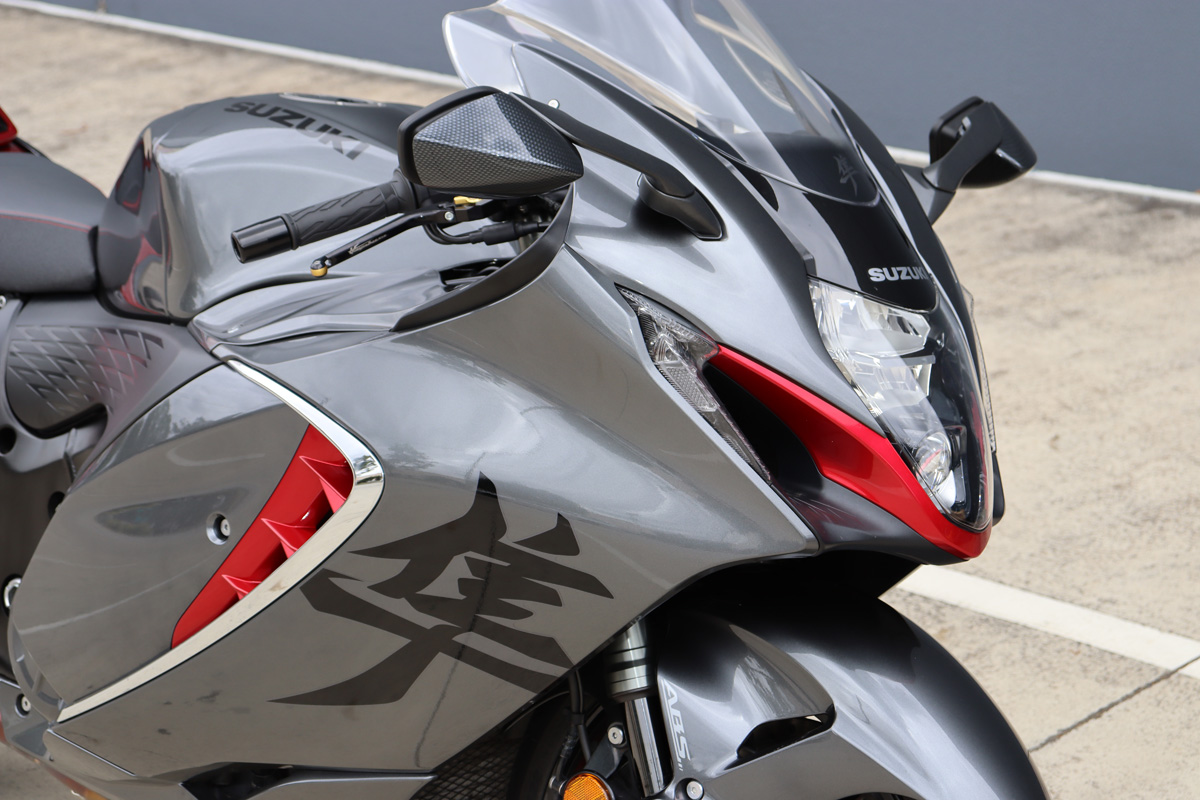
Suzuki Hayabusa Gen 3
(by Guy 'Guido' Allen, Apr 2023)
Suzuki's Gen 3 Hayabusa took some
interesting twists and turns to get where it is – does
it deserve to be in your collection?
(Feature below)

If
your intention is to make a splash in the motorcycle
sphere, one guaranteed way to do it is to set a new
top-speed benchmark. That’s become increasingly
difficult in a world with somewhat more conservative
views on things like speed, but back in 1999 the ability
of Suzuki’s Hayabusa to consistently bust the 300km/h
mark was something to be celebrated. Briefly.
In
the sports-tourer speed wars of the time Kawasaki was
next to come along with the ZX-12R and, in the brief
time between the release of the two models, an industry
agreement came into place, limiting top speeds to
299km/h.
The
immediate result was that Hayabusas subsequently came
out with the limiter and a speedo marked to ‘just’ 280,
with unlabelled increments to 300.

(Above, left to right: Generations 2, 1 and 3)
That
in turn has meant collectors are keen on getting early
Hayabusas with the full 340km/h speedo – particularly if
they’re the copper-coloured variants used in most of the
original factory brochures and ads.
Hayabusa
is now in its third generation. In 2008 the second-gen
boasted a lift in engine capacity from 1299 to 1340cc,
with the power claim going from 130 to a hefty 147kW
(197hp). It also eventually adopted ABS braking.
There
was some debate over the revised styling even if it
remained true to the overall theme. As a ride, the gen 2
was an improvement, with better-developed suspension and
significantly better brakes. The latter had switched
from six- to four-spotters on the front and were much
sharper.

Move
on to 2021 and the company made some courageous
decisions. While everyone expected a big new number
(engine size, power, or both) in fact the engine
remained at the same capacity while power dropped a
little to 140kW (188hp), though torque lifted from 139
to 150Nm. Oh, and the price jumped significantly to
$28,190.
You
can imagine the howling on social media. Trying to
overcome the cacophony, the maker pointed out the bike
was better finished than ever, was running revised
engine tuning that emphasized mid-range performance, a
better chassis and far more sophisticated electronics,
all of which added up to a quicker real world machine.
Every
area of the machine came in for revision. As an example,
while it was still running Kayaba suspension front and
back, the internals had come in for significant
retuning, the effects of which were noticeable for
anyone who had the chance to sample earlier models.

Also
upgraded are the brakes, now with 320mm discs up front
and Brembo Stylema four-spot radial-mount calipers.
As
for the engine, the entire breathing has been revised
with new airbox, injectors and exhaust.

Electronics
now abound, starting with the ride-by-wire throttle.
Then there are six overall ride modes available – three
preset and three customized – different modes for
traction control, wheelie control, engine braking and
launch control. All of this is tied to a Bosch six-axis
Inertial Measurement Unit, which is central to the
cornering ABS.
Still,
there has been plenty of shouting about no new big
horsepower figure. Of course, this is the risk when you
develop a model line that’s effectively become a cult
bike – people develop some passionate views that things
like logic may never shift.
Perhaps
a ride, then? I own a first-generation Hayabusa and have
had a few rides on the second, so was more than a little
curious to throw a leg over the new toy.
The
first thing that hits you is the level of finish and
presentation is several steps up from that of its
predecessors. Little design ‘easter eggs’ are dotted
around the machine and it’s clear someone has gone to a
lot of trouble to make you feel good about it. That
helps to take some of the pain out of the higher price.

Meanwhile,
it has a bunch of new features that have an immediate
effect on how you ride, such as the cruise control and a
two-way powershifter. That first feature alone would
make me look at it in a different light.
The
end result of all this is a motorcycle that feels
tractable and trustworthy. It’s unquestionably a better
ride than its predecessors when it comes to steering
(light and sharp) and suspension. Performance? It’s
unlikely you would notice any deficit – it’s fearsomely
fast when you want it to be, with a mid-range that you
feel like you could surf forever and still get where
you’re going at a hair-raising rate.
We
wonder if this might be the final Hayabusa generation.
There’s no indication of that from Suzuki, but when you
look at how the transport landscape and motorcycle
market are changing, it has to be considered a
possibility. Regardless, having all three generations in
the shed is a very attractive possibility for the
collector.
In the meantime, the latest-gen is easier to ride
with a level of confidence the predecessors can’t match
and certainly deserving of the Hayabusa name.
***
We have a wealth of Hayabusa resources online...
First generation profile as a future collectible;
Second generation (video review at YouTube);
Plus, meet the Hannibal the hotted-up Hayabusa in our shed.

Pipe dreams
Our demo bike was running a four-into-one
Akrapovic aftermarket exhaust system (above), rather
than the four-into-two stocker (below). It had a more
fruity note and was lighter by around 14kg, according
to the maker. We’ve seen dyno charts that suggest a
lift in power (up to 6.5kW) and torque (up to 5.7Nm)
with the aftermarket unit once the correct mapping is
in place.

Good
Quick
Good
handling
Well-finished
Not
so
good
Significant
price
jump

More
info
See our Gen 1
profile here;
The 1999 Gen 1 road
test at Classic Two Wheels;
The Gen 1 in our
shed, aka Hannibal;
Plus the Gen 3 factory development story.
SPECS
Gen
3
Suzuki Hayabusa
ENGINE
TYPE:
liquid-cooled,
four-valves-per-cylinder, inline four
CAPACITY:
1340cc
BORE
&
STROKE: 81 x 65mm
COMPRESSION
RATIO:
12.5:1
FUEL
SYSTEM:
EFI
TRANSMISSION
TYPE:
Six-speed,
constant-mesh
CLUTCH: Wet, multi-plate
FINAL
DRIVE:
Chain
CHASSIS
&
RUNNING GEAR
FRAME
TYPE:
Aluminium twin-spar
FRONT
SUSPENSION:
43mm USD fork, full adjustment
REAR
SUSPENSION:
Monoshock, full adjustment
FRONT
BRAKE:
twin 320mm discs, 4-piston caliper with ABS
REAR
BRAKE:
single-piston caliper with ABS
DIMENSIONS
&
CAPACITIES
WET
WEIGHT:
264kg
SEAT
HEIGHT:
800mm
WHEELBASE:
1480mm
FUEL
CAPACITY:
20lt
TYRES
FRONT:
120/70-17
REAR:
190/50-17
PERFORMANCE
POWER:
140kW
(188hp) @ 9700rpm
TORQUE:
150Nm
@ 7000rpm
HIGHWAY
FUEL
USE: approx 16km/lt
OTHER
STUFF
PRICE:
Au$28,190
on the road (US$18,800, GB£15,200)
WARRANTY:
2
years unlimited km
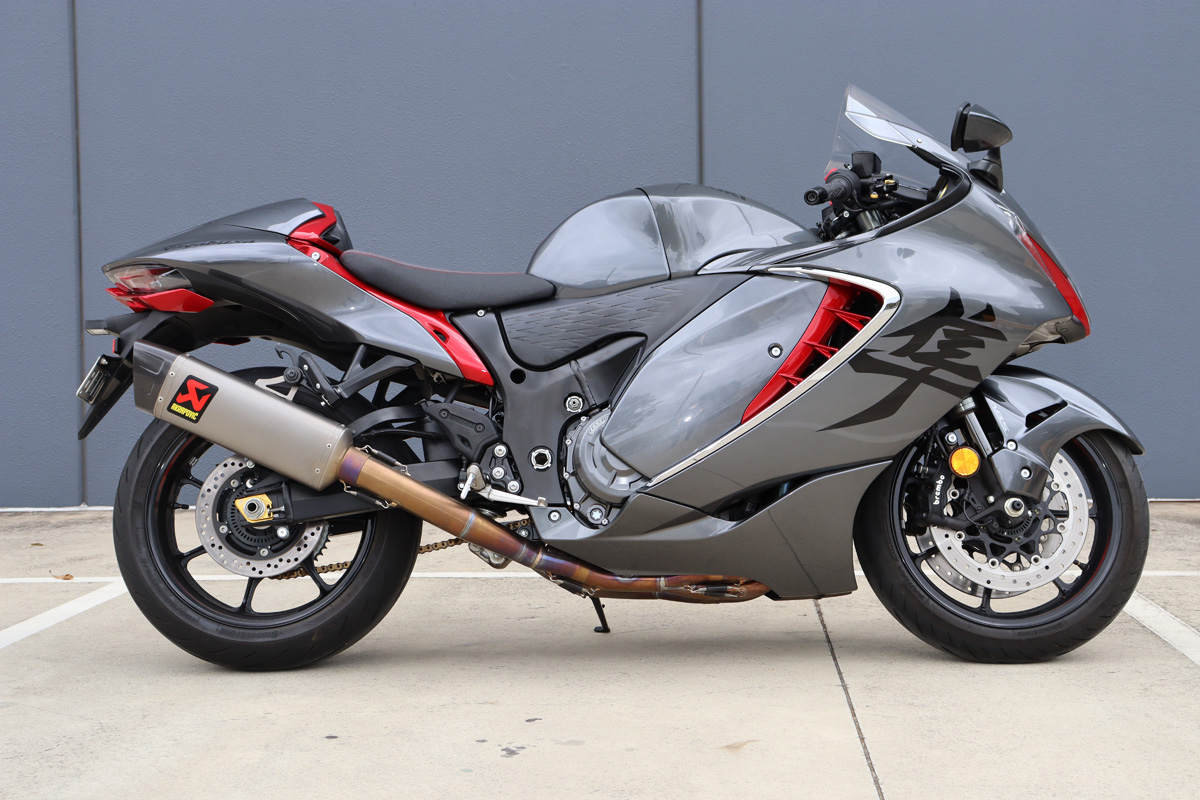
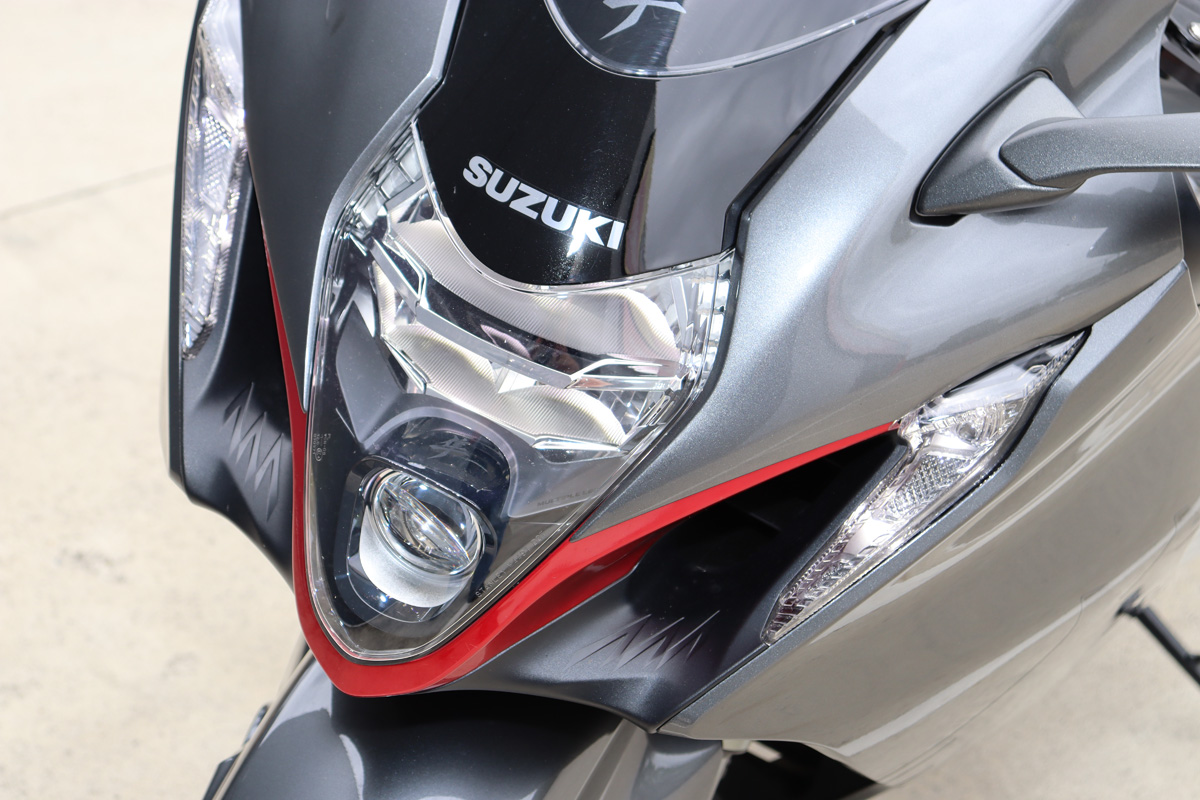
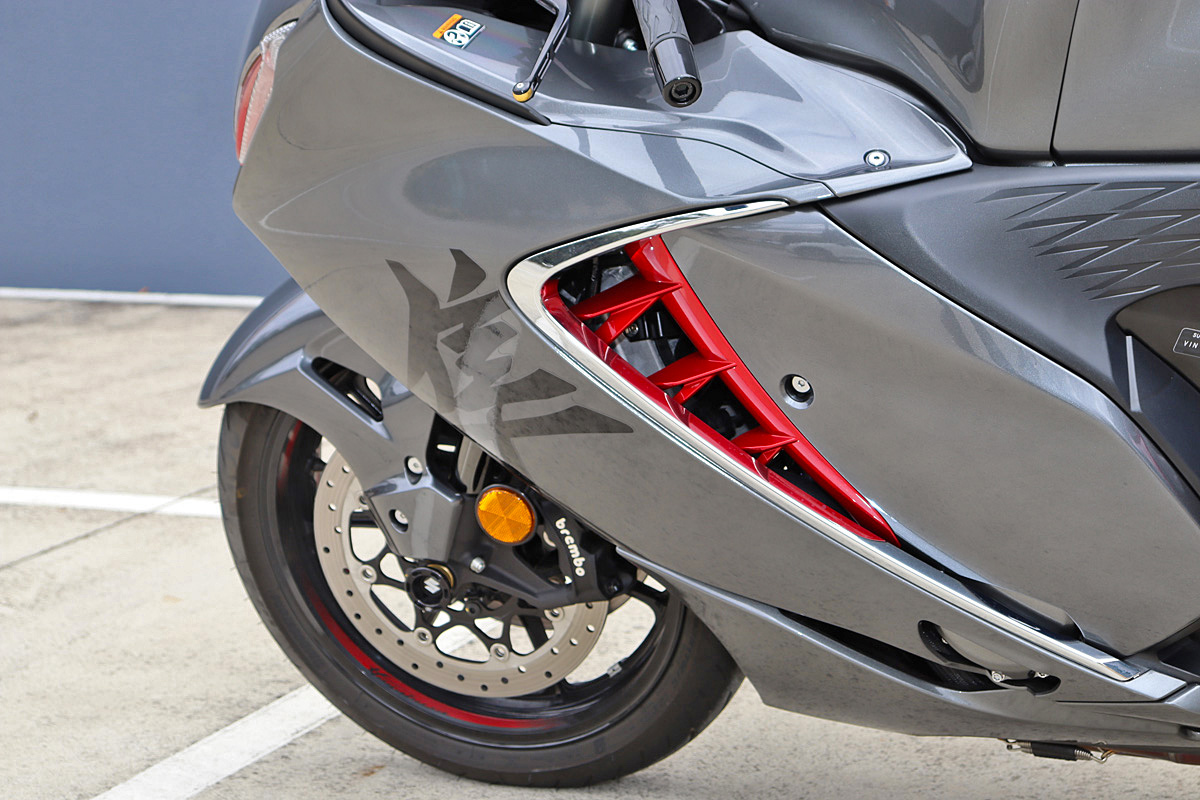



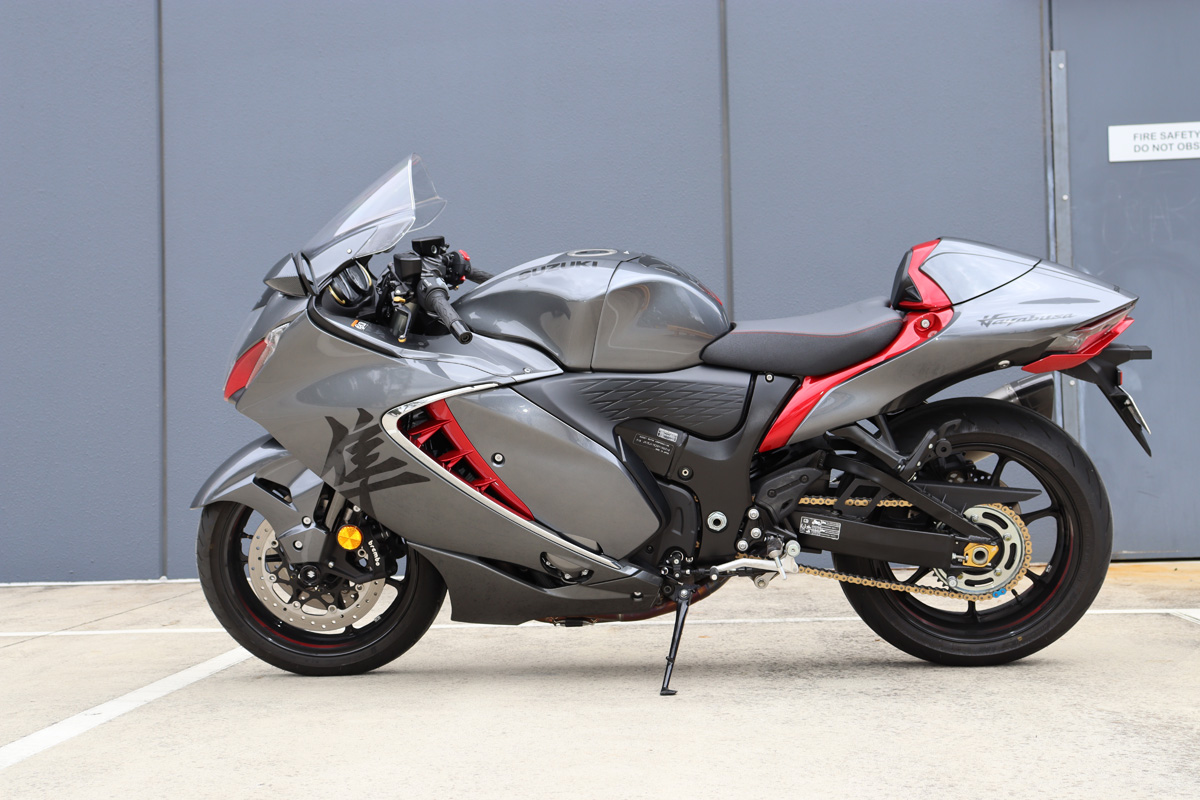

-------------------------------------------------
Produced by AllMoto abn 61 400 694 722
Privacy: we do not collect cookies or any other data.

Archives
Contact




